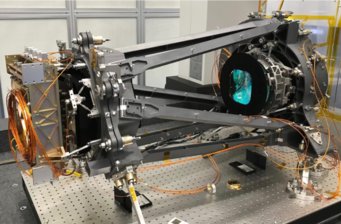Euclid space telescope’s Near-Infrared instrument ready to draw a 3-D map of galaxies of the distant Universe

Once Euclid is launched from French Guiana in 2022, the NISP instrument will feed the world largest near infrared wide field camera put into space. It will deliver near-infrared photometry, spectra and redshifts of tens of million distant galaxies providing a detailed description of the 3-dimensional structure of the universe, and its evolution as a function of look-back time. Euclid will survey the 3-D distribution of galaxies and dark matter and map the geometry of the Universe with the aim of making accurate measurements of the mysterious Dark Matter and Dark Energy, which make up most of the cosmos. No one yet knows what Dark Energy is, and Euclid will be the yet most powerful tool for cosmologists and astronomers looking to find out.
Euclid has a 1.2-metre mirror telescope that is designed to work at both visible and near-infrared wavelengths. It will collect light from distant cosmic objects and feed it into NISP and the second instrument, the VISible instrument(VIS), both working in parallel and observing the exact same regions of the sky at each exposure of the telescope. The complex optical system for NISP was built and tested at MPE. It consists of the camera lens assembly “CaLA” and the corrector lens assembly “CoLA”, which were fully integrated into NISP in December 2018. MPE will continue to predict and support the test results on a system level. In parallel, the Euclid team at MPE will provide simulated data based on our "as built" instrument model to the Euclid science community.












